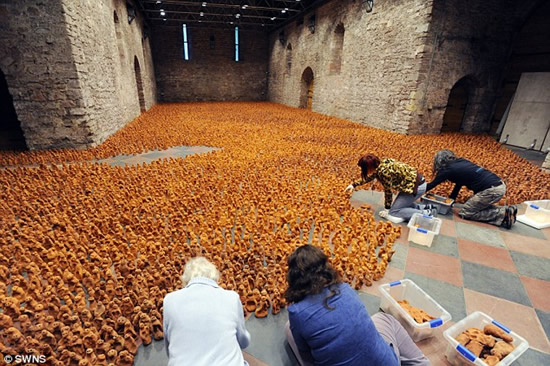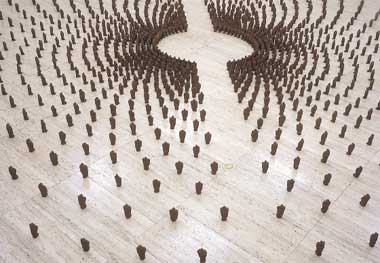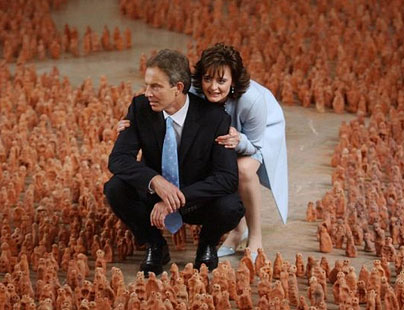|
|
| home | features | exhibitions | interviews | profiles | webprojects | gazetteer | links | archive | forum |
|
Anthony Gormley's Fields Emma Duester reflects on 'Field for the British Isles' following its recent visit to Torre Abbey, Torquay
Gormley himself has described it as “twenty-five tons of clay energised by fire, sensitised by touch and made conscious by being given eyes; a field of glazes which looks at the observer making him or her its subject.” The installation was bought by the Arts Council in 1993 and was, to date, its most ambitious purchase. In the subsequent sixteen years more than one million people have viewed it, whether in a railway shed, a church, a cathedral cloister, or a prison. The little sculptures had been made originally in St. Helens by one hundred people aged from seven to seventy. But they were mostly young people, who were all told to create hand-sized pieces, and to use a pencil to form holes for the eyes which were to be deep and close.
Gormley’s concept originated in 1989 when he placed 156 20cm high inward-looking figures in a series of dispersed rings - this later became known as Gormley’s first Field. This tiny yet mesmerising artwork was exhibited in London and New York. After this, Gormley went on to produce a second Field which was exhibited in Sydney (picture above left). One year later, in 1990, the concept was taken to another level. Gormley assigned people to create the figures, and with their help he formed 35,000 figures in Mexico. This became the American Field, which was exhibited in the Old City Jail in Charlestone, South Carolina as part of the celebrated site-specific exhibition “Places with a Past”. Gormley said that “the building became a catalyst for reflection on liberty and incarceration.”
The Asian Field was made some 10 years later, and, according to Cherie Blair's memoirs, is notable for having been visited in Beijing by Tony Blair at the height of the Iraq dossier scandal: the same day that the suicide of Dr David Kelly became known. Field for the British Isles was at Torre Abbey between 27/6/09-23/8/09
|
|
|

 ‘Field
from the British Isles’ is about space, place and time in relation to
the shared human condition. These sedentary and unfeeling pieces of
clay, 40,000 in all, seem to present individual consciousness and
mortality as things that can both isolate and connect us with others.
‘Field
from the British Isles’ is about space, place and time in relation to
the shared human condition. These sedentary and unfeeling pieces of
clay, 40,000 in all, seem to present individual consciousness and
mortality as things that can both isolate and connect us with others.
 In
the Spanish Barn at Torre Abbey in Torquay,
In
the Spanish Barn at Torre Abbey in Torquay, Two
years later, in 1992, a team built another 25,000 in Brazil for the
“Arts Amazonas” exhibition. He then brought the idea to Europe,
recruiting families from Sweden to make 35,000 figures. This European
Field was exhibited in Prague in 1994, Riga in 1995 and Stockholm in
1996.
Two
years later, in 1992, a team built another 25,000 in Brazil for the
“Arts Amazonas” exhibition. He then brought the idea to Europe,
recruiting families from Sweden to make 35,000 figures. This European
Field was exhibited in Prague in 1994, Riga in 1995 and Stockholm in
1996.